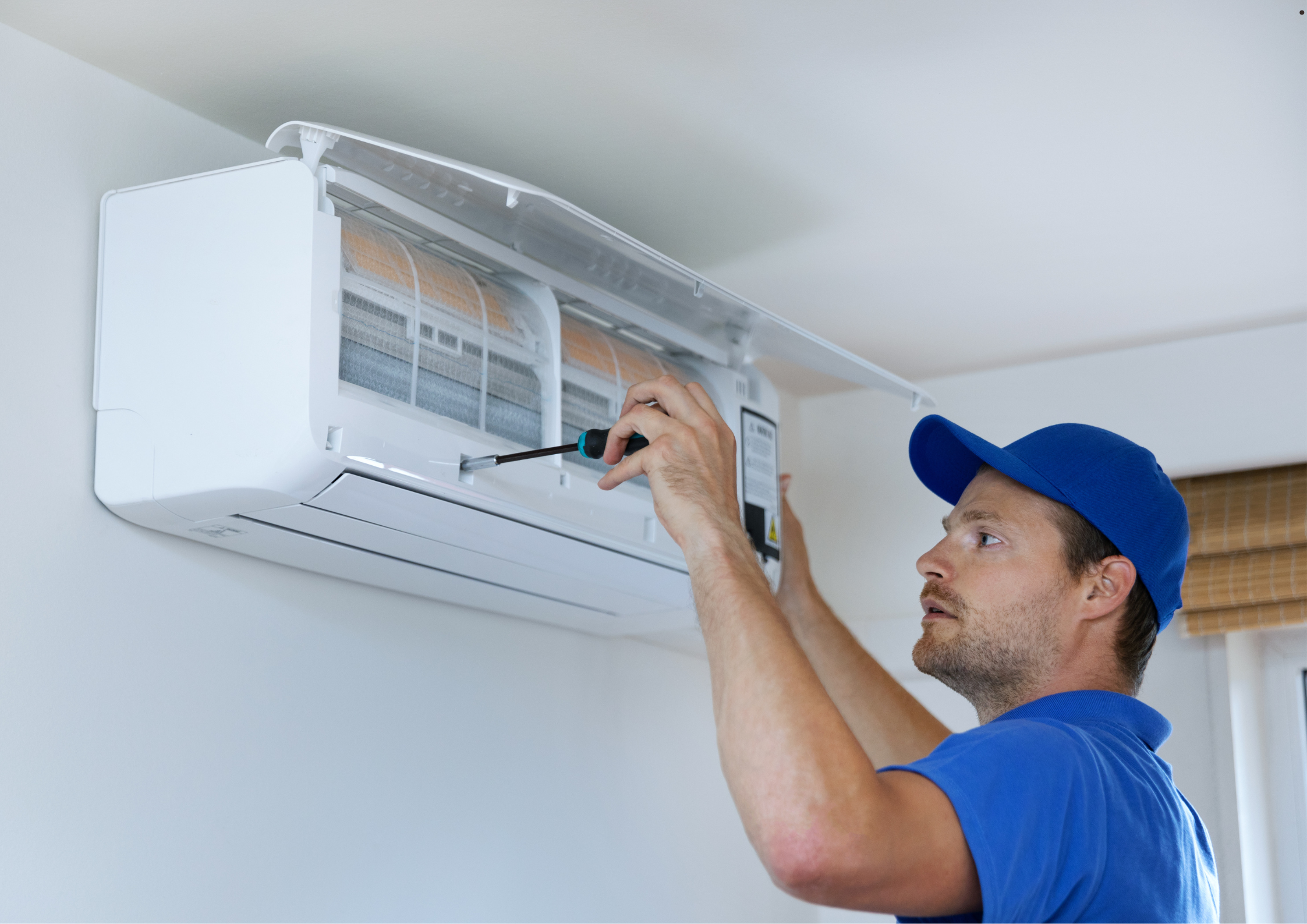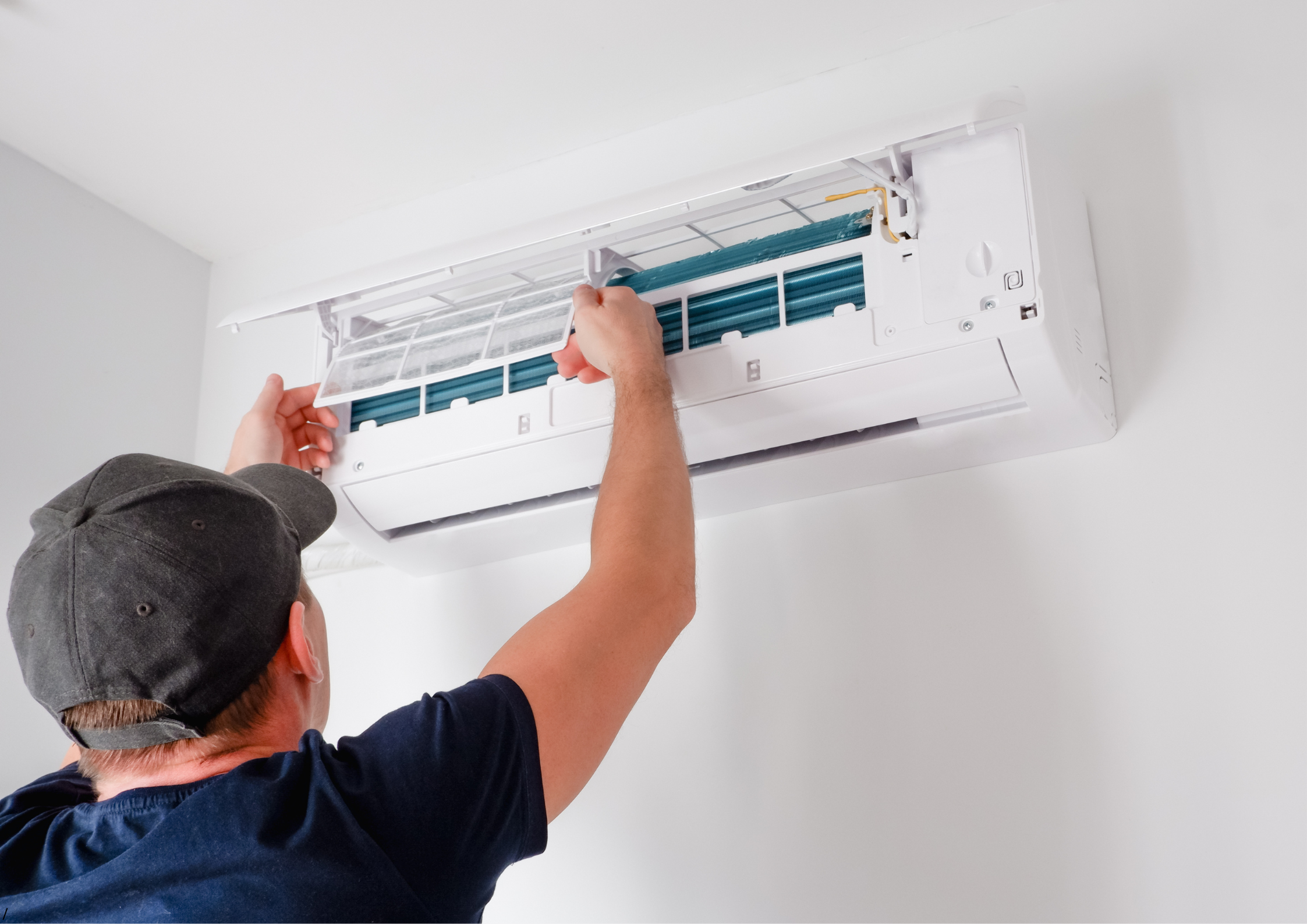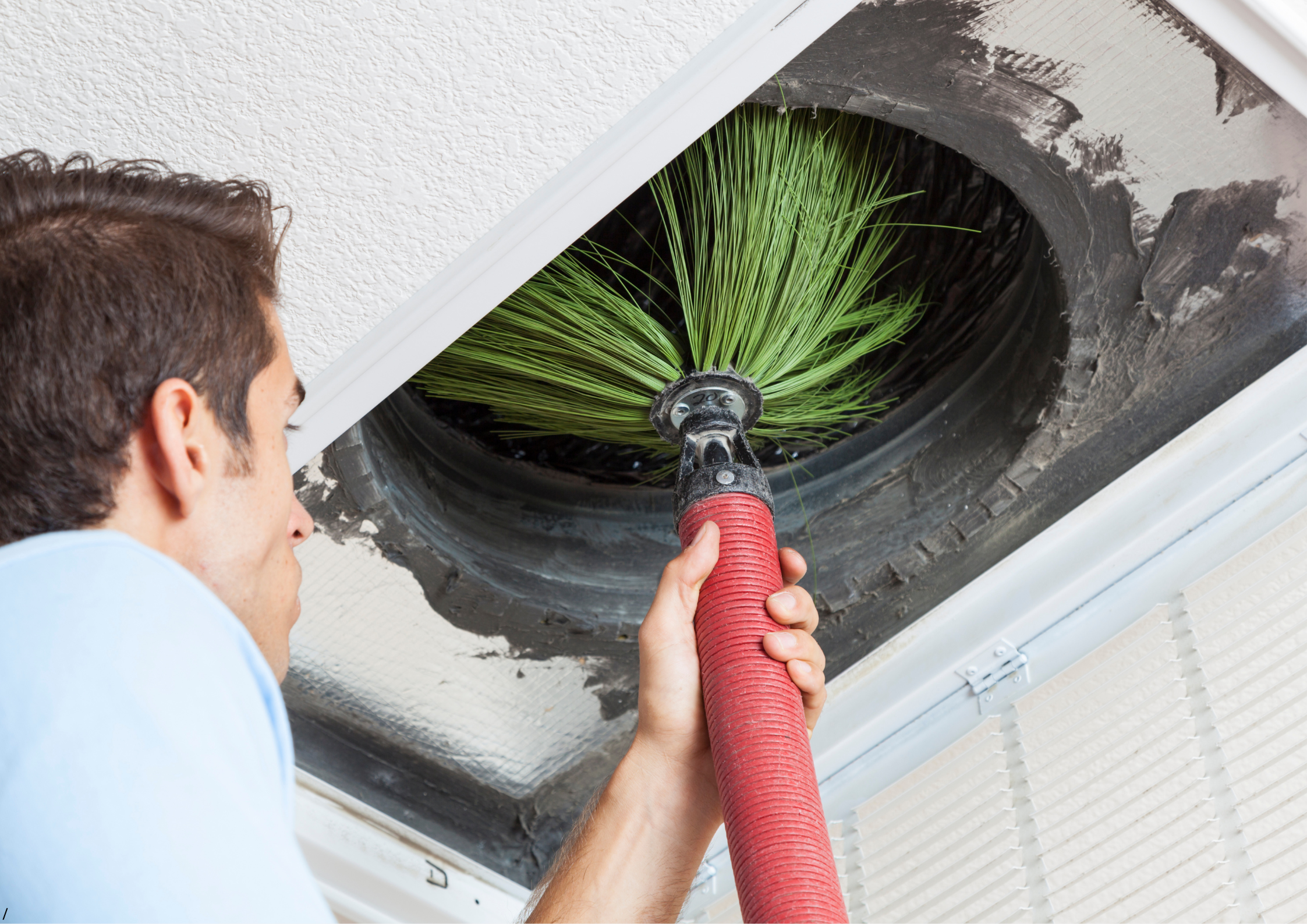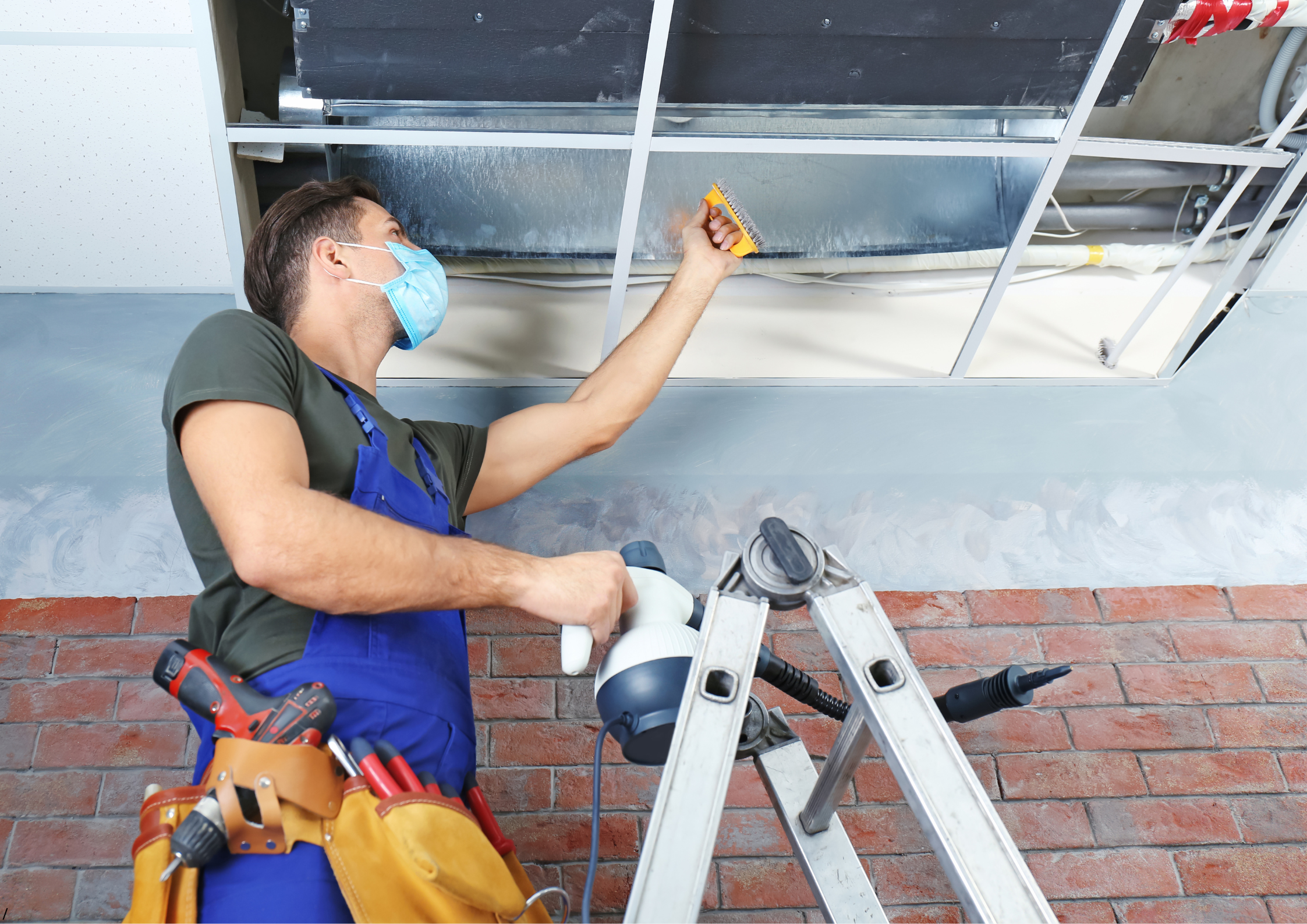
The Importance of Indoor Air Quality

Indoor air quality is something most people don’t think about—until allergies hit, strange odors linger, or breathing becomes a struggle. But did you know that poor indoor air quality can impact your health, sleep, and even energy levels? If you’re wondering how to improve the air inside your home in Sachse, Texas, this guide will walk you through simple, effective solutions.
Good indoor air quality isn’t just about comfort; it’s about health. Pollutants like dust, pet dander, mold spores, and chemical fumes can lead to allergies, respiratory issues, and even long-term health problems. Ensuring clean air in your home or business in Sachse, Texas, is essential for your well-being and that of your family.
Recognizing Poor Indoor Air Quality
Common Signs of Poor Indoor Air Quality
- Persistent allergies or respiratory problems
- Stale or musty odors
- Visible mold or excessive dust
- Dry or irritated skin, eyes, and throat
- Increased static electricity in the air
- Humidity levels that are too high or too low
If you experience any of these issues, your indoor air quality may need improvement.
Causes of Poor Indoor Air Quality
Indoor Air Pollutants and Their Sources
Indoor air pollutants come from a variety of sources, including:
- Building Materials: Asbestos-containing materials, lead-based paints, and synthetic flooring can release toxic chemicals into the air.
- Cooking Appliances: Gas stoves and ovens release carbon monoxide and volatile organic compounds (VOCs).
- Heating Systems: Furnaces and space heaters can produce combustion byproducts, affecting indoor air quality.
- Mold Growth: Often caused by excess humidity, mold spores can contribute to respiratory issues.
- Tobacco Smoke and Secondhand Smoke: Exposure to cigarette smoke increases the risk of lung cancer and heart disease.
- Pet Dander and Dust Mites: These allergens can trigger asthma and allergies.
- Inadequate Ventilation: Poor airflow traps pollutants indoors, reducing fresh air circulation.
- Radon Gas: Radon is invisible and can seep into homes from the ground, increasing the risk of lung cancer.
How Outdoor Air Affects Indoor Air Quality
Outdoor Air Pollutants That Enter Indoor Spaces
Outdoor air pollution can also impact indoor air quality. Wildfires could impact air quality by increasing the presence of fine particulate matter, while vehicle emissions introduce airborne toxins indoors. Ensuring proper ventilation can help mitigate these effects.
The Role of Fresh Air and Proper Ventilation
Bringing fresh air into indoor spaces dilutes pollutants and enhances indoor air quality. Utilizing an HVAC system with air filters, opening windows when weather permits, and using air purifiers can all help improve indoor air.
Ways to Improve Indoor Air Quality
Effective Solutions to Enhance Indoor Air Quality
- Use Air Purifiers: HEPA filters help remove fine particulate matter, pet dander, and other pollutants.
- Increase Ventilation: Install exhaust fans in kitchens and bathrooms to expel indoor air pollutants.
- Control Humidity Levels: Maintain indoor humidity between 30-50% to prevent mold growth and dust mites.
- Test for Radon and Carbon Monoxide: Nest for radon and install carbon monoxide detectors to ensure safety.
- Reduce VOCs: Opt for low-VOC paints, cleaning products, and furnishings to decrease toxic chemical exposure.
- Eliminate Tobacco Smoke: Avoid smoking indoors to reduce secondhand smoke exposure.
- Clean Regularly: Dusting, vacuuming with HEPA filters, and washing bedding frequently helps remove allergens.
- Follow ASHRAE Guidelines: The new ASHRAE guideline for wildfire smoke provides recommendations on how to maintain good indoor air quality during wildfire events.
Health Effects of Poor Indoor Air Quality

Impact on Human Health
Poor air quality can lead to various health problems, including:
- Respiratory Issues: Asthma, bronchitis, and chronic obstructive pulmonary disease (COPD) can be worsened by poor indoor air.
- Heart Disease and Cardiovascular Problems: Exposure to air pollutants increases the risk of heart attacks and strokes.
- Lung Cancer: Radon gas is a leading cause of lung cancer among non-smokers.
- General Discomfort: Fatigue, headaches, dizziness, and difficulty concentrating can be signs of poor indoor air.
Indoor Air Quality Testing and Monitoring
How to Test Your Indoor Air Quality
Regular air quality testing helps identify pollutants and determine if corrective measures are necessary. Tools like “Test Your Nest” kits and air quality monitors can detect contaminants such as VOCs, radon, and carbon monoxide.
Seeking Professional Help
For comprehensive air quality assessments, consult HVAC professionals or environmental protection agencies that specialize in air quality testing.
Indoor Air Quality Resources and Guidelines
EPA and WHO Recommendations
The Environmental Protection Agency (EPA) and the World Health Organization (WHO) offer guidelines on air pollution, environmental health, and indoor air quality IAQ best practices.
Indoor Air Quality Networking and Webinars
Stay updated on IAQ science and technologies by attending indoor air quality networking events and indoor air-related webinars. Upcoming events and resources from national institutes can help you stay informed about new research and best practices.
Take Action for Cleaner Indoor Air
Improving indoor air quality is essential for a healthier living environment. By identifying indoor air pollutants, utilizing proper ventilation, and following professional guidelines, you can create a cleaner, safer indoor space. Don’t wait—test your home for radon today, follow proper ventilation practices, and stay informed through IAQ webinars and networking opportunities.
For those in Sachse, Texas, and beyond, prioritizing indoor air quality means prioritizing your health. Take steps today to breathe cleaner air indoors!
How Can I Improve Indoor Air Quality?

If you’re serious about breathing cleaner air, here are some key steps to take:
1. Change Your HVAC Filters Regularly
Your HVAC system is the first line of defense against airborne pollutants. Replacing air filters every 1-3 months helps maintain healthy indoor air quality and ensures your system runs efficiently.
2. Use Air Purifiers
A high-quality air purifier removes airborne allergens, bacteria, and pollutants. Consider one with HEPA filters for maximum effectiveness.
3. Control Humidity Levels
Too much moisture can lead to mold growth, while too little can cause dry air, leading to irritation. Ideally, indoor humidity should be between 30-50%. A humidifier or dehumidifier can help maintain balance.
4. Ventilate Your Home Properly
Open windows when possible to let fresh air circulate. Use exhaust fans in kitchens and bathrooms to remove excess moisture and cooking fumes.
5. Keep Your Home Clean
Dust, vacuum, and mop regularly to reduce allergens. Using a vacuum with a HEPA filter is especially helpful for trapping tiny particles.
6. Avoid Chemical Pollutants
Switch to non-toxic cleaning products and avoid air fresheners that contain harmful chemicals. Opt for natural alternatives like baking soda or essential oils.
7. Get Your HVAC System Professionally Serviced
Regular HVAC maintenance ensures your system is working efficiently and not circulating dust, mold, or bacteria throughout your home. If you live in Sachse, Texas, local experts can help keep your system in top shape.
Indoor Air Quality Maintenance Costs
Maintaining clean indoor air doesn’t have to break the bank. Here’s a breakdown of potential costs:
|
Maintenance Task |
Estimated Cost (Annual) |
| HVAC filter replacement | $30 – $120 |
| Air purifier maintenance | $50 – $200 |
| Humidifier/dehumidifier upkeep | $50 – $150 |
| Duct cleaning | $300 – $500 |
| Professional HVAC tune-up | $75 – $250 |
Local Solutions for Indoor Air Quality in Sachse, Texas
If you live in Sachse, Texas, you’re not alone in wanting cleaner air. The right professionals can help you improve indoor air quality effectively.
- Sachse+Indoor Air Quality: Many homeowners in Sachse are turning to HVAC experts to maintain fresher air indoors.
- Communities+Indoor Air Quality: Neighborhoods in Sachse are benefiting from improved HVAC systems and air purification methods.
- Local Church+Indoor Air Quality: Churches in Sachse, Texas, are also prioritizing cleaner indoor air for congregants.
- Local Park+Indoor Air Quality: Even outdoor areas influence indoor air—proper ventilation ensures fresh air circulates from outside.
- Local Festival+Indoor Air Quality: Large gatherings highlight the need for well-maintained HVAC systems in community spaces.
Final Thoughts: Breathe Easy with Equal Heat & Air
Your health depends on clean indoor air. Whether it’s changing filters, controlling humidity, or getting professional maintenance, improving your indoor air quality doesn’t have to be complicated.
If you’re in Sachse, Texas, and need expert HVAC services, Equal Heat & Air has you covered. From air quality assessments to system maintenance, their professionals will ensure your home stays fresh and breathable all year round.
Take control of your indoor air quality today—because every breath matters!